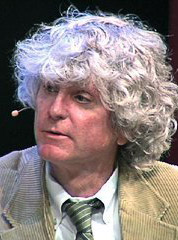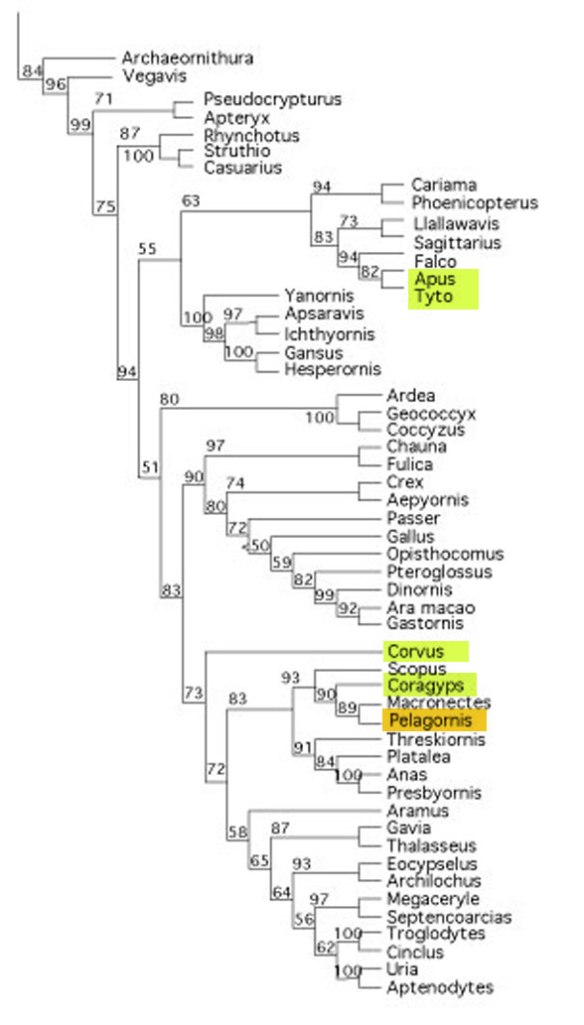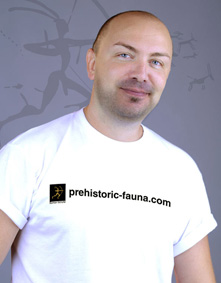 I’ve had a long history with Dr. Kevin Padian,
I’ve had a long history with Dr. Kevin Padian,
one of the smartest paleontologists out there. He made important suggestions to my first book, GIANTS and early in his career made a name for himself by reporting on the bird-like traits of the Jurassic pterosaur, Dimorphodon.
Unfortunately
Dr. Padian has a blind spot. He holds to the invalidated hypothesis that pterosaurs are related to dinosaurs, despite the complete lack of a series of archosaur taxa demonstrating a gradual accumulation of pterosaur traits. He still believes in the clade ‘Ornithodira.’
Ornithodira
Wikipedia reports, “Gauthier…coined and defined a slightly more restrictive node-based clade, Ornithodira, containing the last common ancestor of the dinosaurs and the pterosaurs and all of its descendants. Paul Sereno in 1991 gave a different definition of Ornithodira, one in which Scleromochlus was explicitly added.”
In the large reptile tree (LRT, 1094 taxa) the last common ancestor of dinosaurs and pterosaurs is the Devonian tetrapod, Tulerpeton at the base of the Lepidosaurormorpha – Archosauromorpha split.
Padian 2017
once again links pterosaurs with dinosaurs as he reviews with old illustrations the ankle bone ‘homologies’ of pterosaurs and archosaurs. Unfortunately he ignores Peters (2000a, b) who reidentified certain tarsals based on homologies with Cosesaurus and other fenestrasaurs (see below).

Figure 1. Peteinosaurus and Dimorphodon BMNH4212 pedes. Four tarsals are present on both.
From the Padian abstract:
“The ankle bone assembly of pterosaurs has received little attention, even though it is critical for understanding the functional morphology of the leg and the foot and has far-reaching implications for interpretations of stance and gait in ornithodirans in general, as well as for any role the leg may have had in the flight of pterosaurs. Of particular importance are the distal tarsal bones, which are seldom preserved clearly.”
Padian found only two large (medial and lateral) tarsals in Dimorphodon, but most early pterosaurs have four tarsals (Fig. 1), as some of his figures show. In Dimorphodon and Pteranodon the distal and proximal tarsals appear to fuse to one another creating two large side-by-side tarsals with a concave surface for articulation with the tibia/fibula. In all other pterosaurs the proximal tarsals are the astragalus and calcaneum. The ‘distal tarsals’ are actually distal tarsal 4 + the centrale sometimes accompanied by a tiny distal tarsal 3 (Peters 2000a) based on homologies with several tritosaur lepidosaurs, like Macrocnemus.
“Their concave proximal facets articulate with the medial and lateral condyles (comprising the astragalus and, at least basally, the calcaneum) of the tibiotarsus.”
The proximal tarsals are not part of the tibia in pterosaurs. Pterosaurs do not fuse the tibia and tarsus to form a tibiotarsus (Peters 2000a).
“Distally, they articulate with metatarsals II–IV, and the relatively large metatarsal V articulates on the distolateral side of the lateral distal tarsal.”
Not quite. That’s distal tarsal and the calcaneum articulate with metatarsal 5. That is exactly what happens, as Padian shows, in the archosauriforms Euparkeria, Crocodylus and Lagerpeton. That is exactly what also happens in the tritosaurs Huehuecuetzpalli, Macrocnemus, Langobardisaurus, Cosesaurus and Sharovipteryx (Peters 2000a and ReptileEvolution.com).
“The homology of these bones in pterosaurs can be established with reference to other early-branching ornithodirans, and the morphology of the bones implies similar functional roles and ranges of motion.”
Convergence here with tritosaur lepidosaurs. Worth looking at.
“The medial distal tarsal is likely the fusion of distal tarsals 2 C 3, and the lateral distal tarsal is distal tarsal 4, a pattern reflected in ontogeny.”
No and yes. In tritosaurs distal tarsals 1–3 are tiny vestiges. Distal tarsal 3 is retained in many long-tailed pterosaurs. Distal tarsal 4 remains large. The proximal and distal elements fuse in Pteranodon. The medial centrale is Padian’s medial distal tarsal (Peters 2000a).
“The pterosaur ankle was capable of plantarflexion, but adduction and abduction of the feet were greatly limited.”
True.
“A synoptic survey of available tarsal bones of pterosaurs shows that the morphology of these bones remained relatively unchanged from the most basal pterosaurs to the pteranodontids and the azhdarchoids.”
True.
“Comparisons among a variety of ornithodirans show that the basic functional pattern did not vary importantly, although some ornithodiran subgroups evolved unique schemes of development and sequential ossification.”
True.
Dr. Padian writes:
“Pterosaurs were not thought to be particularly close to dinosaurs, or to any other archosaurs.”
When? That’s not current and traditional.
“Bennett, as noted above, does not accept that pterosaurs are ornithodirans. So it is all the more striking that these authors come to the same conclusion as functional morphologists who accept that pterosaurs are ornithodirans. The consensus of these authors is that pterosaurs, like dinosaurs and other ornithodirans, had a mesotarsal ankle that functioned as a hinge joint. Because the knee was also a hinge joint, as were the metatarso-phalangeal joint and the interphalangeal joints (Padian, 1983b, 1991), and the hip joint effectively allowed only protraction and retraction (see Schaeffer, 1956, and also Padian, 1983b), the gait would have been parasagittal and the stance erect (Padian, 2008). No argument has ever been made to counter these observations.”
No argument can be made to counter these observations. However, they can be expanded. Padian ignores the fact that other clades, like lepidosaurs, are also capable of bipedal locomotion and that some (like those list above) also have a simple hinge ankle joint. He also fails to note that in some pterosaurs the femoral head is at right angles to the shaft, but in others it is almost in line with the shaft, creating a splayed femur, like a lepidosaur, yet, like certain lepidosaurs, still capable of erect bipedal locomotion (Fig. 2).
Padian discusses the splayed femur concept
and agrees with Unwin that it would have provided a clumsy, sprawling gait. This is incorrect as anyone can learn from making museum-quality skeletons that have splayed femora and erect hind limbs. The angles all work out (Fig. 2).
And running bipedal lizards are not clumsy. They are speedy wonders!

Figure 2. Standing Pteranodon with sprawling femora. We’ve known this for 17 years.
Way back in the 1980s,
Kevin Padian and Chris Bennett. in the same conversation. cautioned me to employ phylogenetic analysis in my studies. Given present data in the academic literature (Peters 2000a, b) you have to ask yourself why Padian, like Bennett (2012) restricted his taxon list to just archosauromorphs.
For those who wonder why I don’t publish,
maybe Padian’s paper will offer some insight. I have published several papers on pterosaur relationships, wings and feet. None were cited by Dr. Padian. He is listed in the acknowledgments of Peters 2000a for reading an earlier version of the manuscript. The last time we e-mailed he was angry that I made several of the above observations.
References
Bennett SC 2012. The phylogenetic position of the Pterosauria within the Archosauromorpha re-examined. Historical Biology. iFirst article, 2012, 1–19.
Padian K 1983. Osteology and functional morphology of Dimorphodon macronyx (Buckland) (Pterosauria: Rhamphorhynchoidea) based on new material in the Yale Peabody Museum, Postilla, 189: 1-44.
Padian K 2017. Structure and evolution of the ankle bones in pterosaurs and other ornithodirans. Journal of Vertebrate Paleontology.
DOI: 10.1080/02724634.2017.1364651
Peters D 2000a. Description and Interpretation of Interphalangeal Lines in Tetrapods. Ichnos 7:11-41.
Peters D 2000b. A Redescription of Four Prolacertiform Genera and Implications for Pterosaur Phylogenesis. Rivista Italiana di Paleontologia e Stratigrafia 106 (3): 293–336.














 In the present subset
In the present subset 















